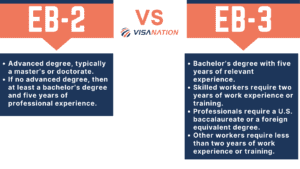CAFC Says PTAB Got it Wrong in Mixed Ruling on Food Slicer Patent
“The Board’s adoption of Weber’s argument and evidence, coupled with its mischaracterization of Provisur’s arguments, precludes us from engaging in meaningful appellate review and, therefore, violates the APA.”- CAFC
The U.S. Court of Appeals for the Federal Circuit (CAFC) yesterday issued a precedential decision, in part holding that the Patent Trial and Appeal Board (PTAB) violated the Administrative Procedure Act (APA) by failing to “fully and particularly set out the bases upon which it reached its decision” to render obvious certain claims of Provisur Technologies’ patent. The CAFC also said the Board erred in its analysis finding two of the claims not unpatentable. The opinion was authored by Judge Prost.
The case relates to claims 1-14 of Provisur’s U.S. Patent No. 6,997,089 for “a method and system for ‘classifying slices or a portion cut from a food product according to an optical image of the slice,’” according to the CAFC opinion. The PTAB held that Weber, Inc. had proved unpatentable as obvious claims 1–10, 13, and 14 but not claims 11 or 12. Provisur appealed the unpatentability determinations and Weber cross-appealed the finding that claims 11 and 12 were not unpatentable.
Board Did Not Err in Denying Motion to Exclude Evidence
Provisur first argued that the PTAB abused its discretion in denying Provisur’s motion to exclude evidence supplied by Weber in reply to Provisur’s response to the inter partes review (IPR) petition. Provisur argued in its response to the IPR that the prior art did not disclose a digital camera and Weber supplied evidence that it said demonstrated the prior art disclosed the same type of camera described in Provisur’s patent. While Provisur said Weber’s reply and the evidence supplied “gap-filled” the petition, the CAFC disagreed and said the PTAB properly found that the reply evidence was directly responsive to Provisur’s arguments and highly probative. And while it was true that Weber could have included the relevant evidence in the petition initially but didn’t, that argument “conflates capability with obligation,” said the court. The opinion explained:
Weber could have submitted the ELECTRIM evidence with its petition, but nothing obligated it to, nor does Provisur convincingly argue otherwise. The petition set forth a prima facie obviousness case, and the reply adduced evidence shedding light on the ’089 patent’s scope after Provisur had tried to narrow it.
The court also dismissed Provisur’s attempts to exclude the evidence under Rule 403 of the
Federal Rules of Evidence as a late submission or that two days, “the amount of time it had after the expert’s deposition to submit its sur-reply, was insufficient time for it to respond to arguments characterizing the very technology Provisur’s patent describes.”
Board’s Obviousness Analysis Fails APA Standard for Meaningful Appellate Review
Turning to Provisur’s argument that the Board failed to fully explain the bases for reaching its decision as mandated by the APA, however, the CAFC agreed that the PTAB failed to meet this standard. The court found that the Board did not explain how one particular combination of prior art (Whitehouse/ Antonissen/ Hardy) teaches or suggests the “surface-area limitations” of claim 1 and each of the independent claims. For these limitations and all of the other claim limitations except for the “digital image receiving device” limitation, the Board simply said that that “Petitioner’s argument and evidence summarized above, which we adopt as our own, persuades us that the combination of Whitehouse, Antonissen, and Hardy collectively disclose or suggest all elements of claim 1 other than the ‘digital image receiving device.’” While the Board’s reasoning was that Provisur did not dispute that “[Weber] ha[d] demonstrated that the combined teachings of Whitehouse, Antonissen, and Hardy describe or suggest all limitations of claim 1 other than the ‘digital image receiving device,’” this both mischaracterized Provisur’s argument and did not allow for “meaningful appellate review,” said the court. The opinion added: “The Board’s adoption of Weber’s argument and evidence, coupled with its mischaracterization of Provisur’s arguments, precludes us from engaging in meaningful appellate review and, therefore, violates the APA.”
The court also dismissed Weber’s arguments that the PTAB’s logic was reasonably discernible from the record and ultimately vacated the Board’s decision with respect to claims 1, 9, and 13; further, because those were all of the patent’s independent claims, the Board’s judgment as to all claims found unpatentable was also vacated and remanded “for the limited purpose of the Board’s consideration of Provisur’s surface-area-limitation arguments.”
Patentability Analysis was Faulty and Inconsistent
Finally, on Weber’s cross-appeal, Weber argued the PTAB’s finding that claims 11 and 12 were patentable over the prior art should be overturned because: “1) the Board erred in construing “weigh conveyor” to mean “scale”; and (2) the Board incorrectly viewed Wyslotsky’s teachings in isolation rather than in the context of Weber’s asserted Whitehouse/Antonissen/Hardy/Wyslotsky combination.” The CAFC agreed on point two, explaining that the Board incorrectly focused on Wyslotsky in isolation rather than in combination with Whitehouse and Antonissen. And more importantly, said the court, “the Board’s findings for claims 11 and 12 are inconsistent with those it made for claims 2, 6, and 7.” Ultimately, the PTAB “credited for claims 2, 6, and 7 the same arguments Weber made for claims 11 and 12,” and thus the Board erred in deciding that claims 11 and 12 are not obvious. On remand, therefore, “should the Board find the independent claims obvious after considering the surface-area limitations, claims 11 and 12 are also obvious in view of the Board’s determinations regarding claims 2, 6, and 7, which we do not otherwise disturb on appeal,” said the CAFC.
Rights acquired by AdobeStock
Eileen McDermott
Eileen McDermott is the Editor-in-Chief of IPWatchdog.com. Eileen is a veteran IP and legal journalist, and no stranger to the intellectual property world, having held editorial and managerial positions at […see more]







